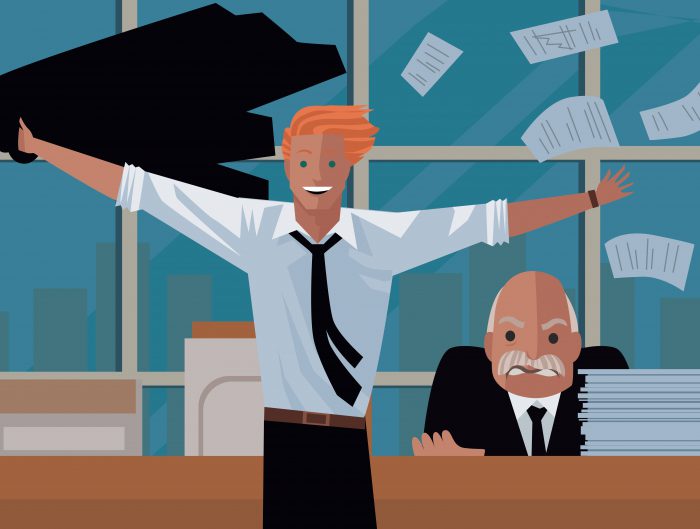
The risk of burnout is very real among remote employees in the Covid-19 era.
Organisations all over the world have been grappling with how to best manage remote employees since Covid-19 mitigation measures were introduced a few months ago.
While many employers were initially worried about maintaining productivity among remote workers, many other issues have since emerged.
Chief among them is the risk of burnout. Employees have been generally vocal about how WFH arrangements have blurred the lines between work and free time.
In a recent Harvard Business Review article, researchers, Laura M. Giurge, a Postdoctoral Research Associate at London Business School and the Barnes Research Fellow at the Wellbeing Research Centre at the University of Oxford and Vanessa K. Bohns, an associate professor of Organisational Behaviour at the ILR School at Cornell University, point out that the risk of employee burnout during this period is “substantial.”
The pandemic has certainly exacerbated the risk. “To signal their loyalty, devotion, and productivity, they may feel they have to work all the time. Afternoons will blend with evenings; weekdays will blend with weekends; and little sense of time off will remain,” they say.
NEW STRESSORS
The pandemic has also created new sources of stress. HR leaders we interact with say that change and disruption are a strain on mental energy. Also, as companies strive to recover from the economic impact of Covid-19, it’s very easy to be overcome by work.
To top it all off, vacations overseas are not a viable option during this time due to travel restrictions around the world. While you could check into a local hotel for a staycation, the fact that others in your organisation are hard at work could scupper your enjoyment. In addition, since working remotely seems to have become the norm for now, the temptation to continue working during your staycation can be overwhelming.
WHO IS THE IDEAL WORKER?
At a time when pay freezes and layoffs are common, most strive to be “ideal workers” to continue being seen as valuable to their employers. The unrealistic assumption is that “ideal workers” are willing to work 24 hours a day, 7 days a week and the thought of a staycation doesn’t even cross their minds.
However, more leaders are realising today that the ideal worker needs to be in good mental health and for that to happen, they need the freedom to take breaks.
Giurge and Bohns provide advice on what individual workers can do to stay mentally healthy. They recommend maintaining physical and social boundaries such as clearly demarcating hours for work and other activities.
But, while self-care is important, we often tell leaders that if they truly believe in employees’ mental health, they must ensure this belief is reflected clearly in the corporate culture and they must lead by example.
Assure your employees that it’s okay for them to take breaks and set work-life boundaries.
LEADERS NEED TO MODEL BEHAVIOUR
If leaders take breaks, they send out a clear message that it’s safe for employees to do so without being judged. Take time off yourself and share pictures and stories of what you did during your break. Encourage others within your team to do the same.
REMIND YOUR EMPLOYEES THAT THEIR MENTAL HEALTH IS IMPORTANT TO YOU
Be proactive about reminding those who have not taken any time off and seem to be “always on” that it’s vital for them to disconnect.
Find out more about what their lives are like right now; what are the stressors they have to deal with at home in addition to work.
This will enable you to encourage those who may need a break, but are afraid to ask, to take one.
DESIGNATE “NON-WORKING” DAYS AND DAY-TO-DAY “NON-WORKING” TIME POCKETS
Many remote employees report working all day even on previously non-working days such as weekends. If you’ve not already done so, reinforce that previously agreed-upon non-working days should remain so, unless otherwise stated. If you truly care about your employees, you would avoid sending them e-mails or scheduling remote meetings on these days.
Considering that employees may want to save most of their traditional paid time off (PTO) for when vacations are possible, Kevin Corliss, CEO of Treehoppr in an article for HR.com, recommends that companies go a step further by creating new out-of-office designations meant to emulate PTO, like “Summer Fridays” or new company “holidays”.
“These designations should be time-locked, unattached to PTO and require action. The point is to encourage at least a full day away from work to completely unplug, rather than trying to find a few pockets of the day to make time for themselves. This way, employees can still conserve PTO and companies can ensure that people are getting a chance to hit refresh,” he says.
He also suggests offering “additional, non-traditional time off designations that coincide with working from home and social distancing needs to show understanding of the new normal.”
“These designations – like screen breaks, grocery shopping, family time and homeschooling – will make it easier to step away from work as needed,” he says.
To ensure that managers and team members respect fellow team mates’ designated time off, you need to ensure that “teams can operate smoothly while employees transition in and out of work. To streamline the process, HR teams should implement standardised policies for employees to update teams on the status of all projects, assign oversight and ownership, and note any pending deadlines prior to signing off,” says Corliss.
STOP SENDING NON-URGENT E-MAILS OUTSIDE OFFICE HOURS
Giurge and Bohns point out that their research has shown that “workers often unintentionally make it hard for their supervisors, colleagues, and employees to maintain boundaries.”
Sending work e-mails outside office hours is a sure way of doing this. In five studies involving more than 2,000 working adults, they found that “senders of after-hours work e-mails underestimate how compelled receivers feel to respond right away, even when such e-mails are not urgent.”
Leaders who are serious about giving their employees a break would simply not send such e-mails after office hours, whether your employee is working from home or on the premises. Research suggests that e-mailing your employees after business hours, even if you don’t expect a response right away, prevents them from ever fully disengaging from work, creating chronic stress and emotional exhaustion. All of this ultimately hurts their performance.
More importantly, giving your employees the space to truly disengage and recharge is the humane thing to do.




Leave A Reply